What is an Ao Dai?
The Ao dai is a traditional Vietnamese garment, often worn by women. It is a long, flowing dress with two panels, one in the front and one in the back, that falls below the knees. The sleeves are long and fitted, and the dress is worn with pants instead of the black skirt that was worn in the past. The pants are ankle-length and have wide legs.
The structure of the Ao dai
The structure of the Ao dai is divided into five parts, including:

- The collar of the Ao dai: The traditional Ao dai collar is high, about 4 to 5 cm. Today, the style of the Ao dai collar is quite diverse, such as round neck, square neck, boat neck, heart neck, U-neck, and pearls are often added to the collar to create a highlight.
- The body of the Ao dai: is calculated from the collar to the waist. The Ao dai body has two pieces, one in the front and one in the back. The buttons of the Ao dai usually go diagonally from the neck to the shoulder and then down to the waist. From the waist, the body of the Ao dai is split into two panels, with the slits located on the sides of the hips. Today, the style of the Ao dai is also diverse, with two-panel and four-panel Ao dai.
- The panels of the Ao dai: The Ao dai usually has two panels, the front panel and the back panel. The front panel of the traditional Ao dai is equal to the back panel, but today, there are many styles of Ao dai with the front panel shorter than the back panel. The Ao dai can also have four panels, with two panels in front and two panels in back. In this case, each panel of the front and back is made of two layers to create a puffy, flowing look that makes women look more graceful and elegant.
- The sleeves of the Ao dai: The traditional sleeves of the Ao dai are fitted to the arms and are calculated from the shoulder. Over time, the style of the Ao dai sleeves has evolved into a variety of styles, including puffy sleeves, short sleeves, flared sleeves, elbow-length sleeves, short sleeves, and slit sleeves.
- The pants of the Ao dai: The pants of the Ao dai replaced the skirt that was worn in the past. The Ao dai pants are usually made with wide legs that fall to the ankles. In the past, the material used to make Ao dai pants was usually sturdy fabric, but today, there are many other materials available, such as silk, brocade, or softer, flowing fabrics. The color of the Ao dai pants is usually white, but today, Ao dai outfits come in a variety of colors to match the color of the Ao dai. Today, the outfit is also modernized with a long skirt to create a gentle and elegant look. Ao dai is a beautiful and meaningful garment that is a source of pride for the Vietnamese people. It is a symbol of Vietnamese culture and identity.
Origin of the Ao Dai, Traditional Vietnamese Clothing
Ao dai appeared in the 17th century and has gone through many periods of transition. After a long process of change and development, the Ao dai has finally acquired the beauty that bears the strong imprint of Vietnamese fashion and culture as it is today. No matter how many thousands of years or how many changes in modern society, the beauty of Vietnamese women has always remained a constant. It is the beauty of gentleness, grace, lightness, modesty, and sometimes shyness and embarrassment, but no less charming. The Ao dai is a beautiful symbol that represents all the beauty of Vietnamese traditional clothing.
The Meaning of the Ao Dai
The meaning of the Ao dai dress contains deep traditional meanings, is the dress that occupies the hearts and minds of Vietnamese people. Despite going through thousands of years, Vietnamese culture has not been lost and is preserved through the Ao dai - a dress that is both seductive and modest, elegant, and unmistakable from other cultures. The image of women in Ao dai is always present in major occasions, international arenas, and competitions, large or small. This shows that the Ao dai is always cherished by Vietnamese people and used on important days of the country and even in personal life.
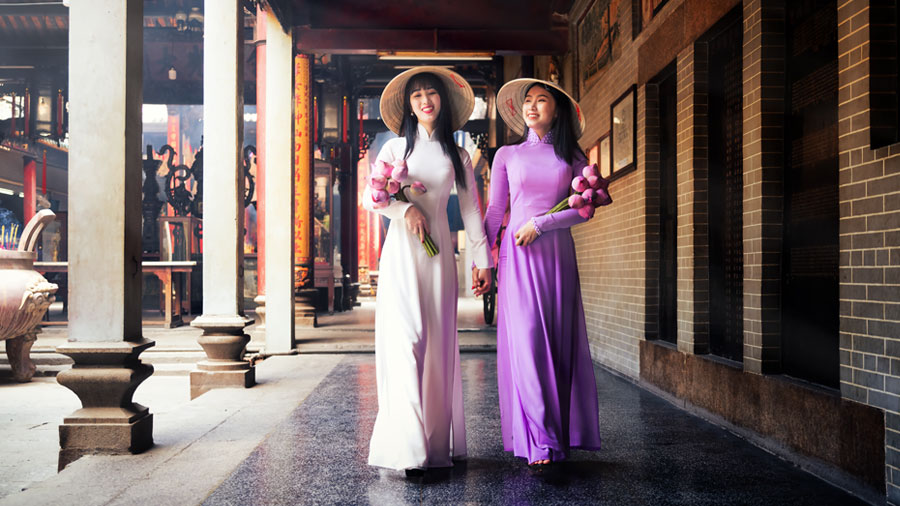
The traditional Vietnamese Ao dai through the ages
Ao dai has long been a traditional garment of Vietnam. Not only is it the national dress, the Ao dai also has a rich history, culture, aesthetic concepts, and reflects the cultural identity of our nation. The Ao dai has been chosen by many Vietnamese beauty representatives as the dress for major programs and festivals, in order to honor the value, as well as promote the image of the country, people, and culture. Let's take a look at the beautiful ao dai models in each period of Vietnam.
Giao Lanh Ao dai
First, we have to mention the "Giao Lanh Ao dai" that appeared in the period when our country was divided into two sides. This type of garment has a loose design, with two side slits, also known as skirts, long sleeves and the cuffs are also made quite wide. The body of the shirt is up to the ankles and is made of four pieces of fabric, worn over a lining yếm, combined with a colored belt and a black skirt. The giao lãnh Ao dai has a collar style similar to the tứ thân Ao dai, however, the front of the shirt does not need to be tied like the tứ thân Ao dai. Despite only having the rudimentary shape of the Ao dai, the graceful and delicate features of this type of garment can still be felt.
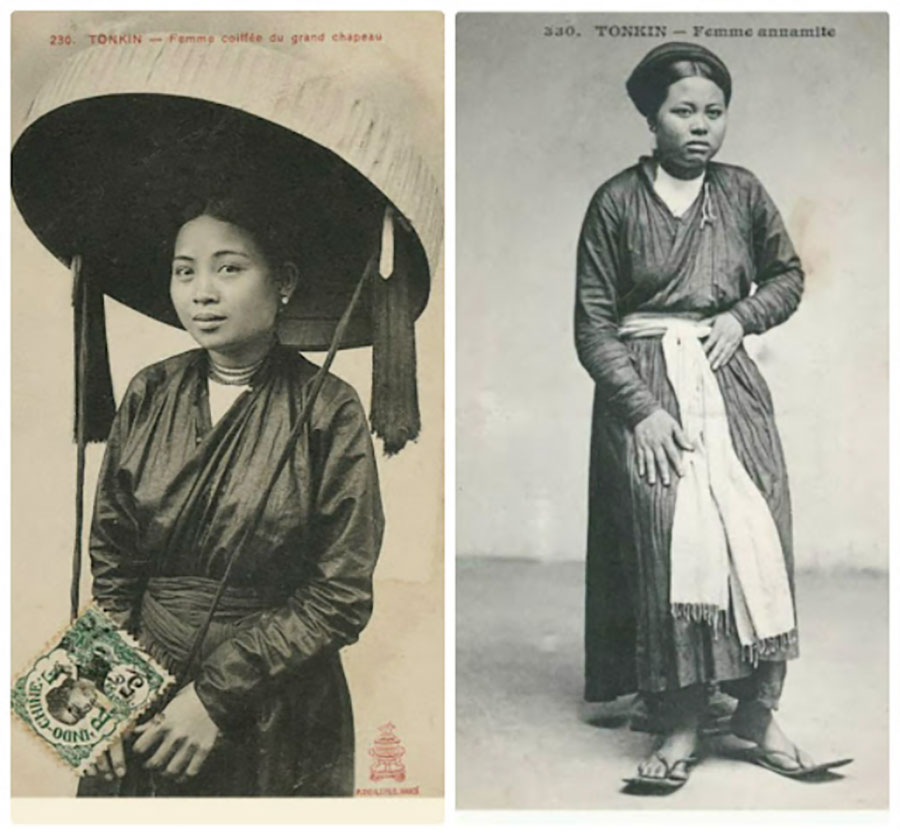
The four-panel Ao dai
Next is the birth of the "four-panel Ao dai" in the 18th century, which was transformed from the giao lãnh Ao dai. According to historical researchers, in order to make it easier for women to work, the old giao lãnh Ao dai was sewn with the front two panels to be tied together, passing down to the two middle panels, and the two back panels were sewn together to form the back panel. The familiar combination with the four-panel Ao dai is the yếm, crow's beak scarf, or quai thao hat.
This type of Ao dai has not changed much from the giao lãnh Ao dai, and is often sewn in dark colors, but still gives a feeling of rusticity, lightness, and modesty to the wearer.
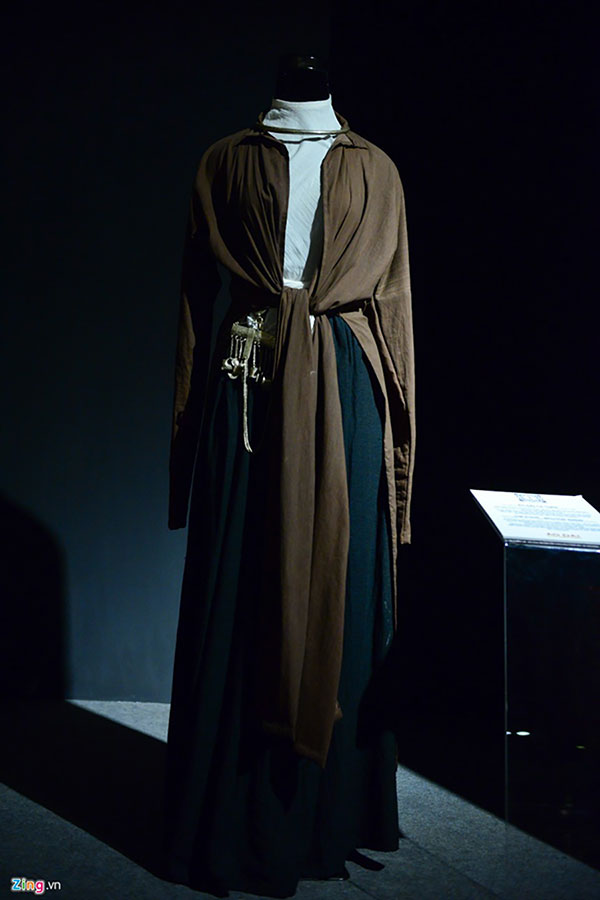
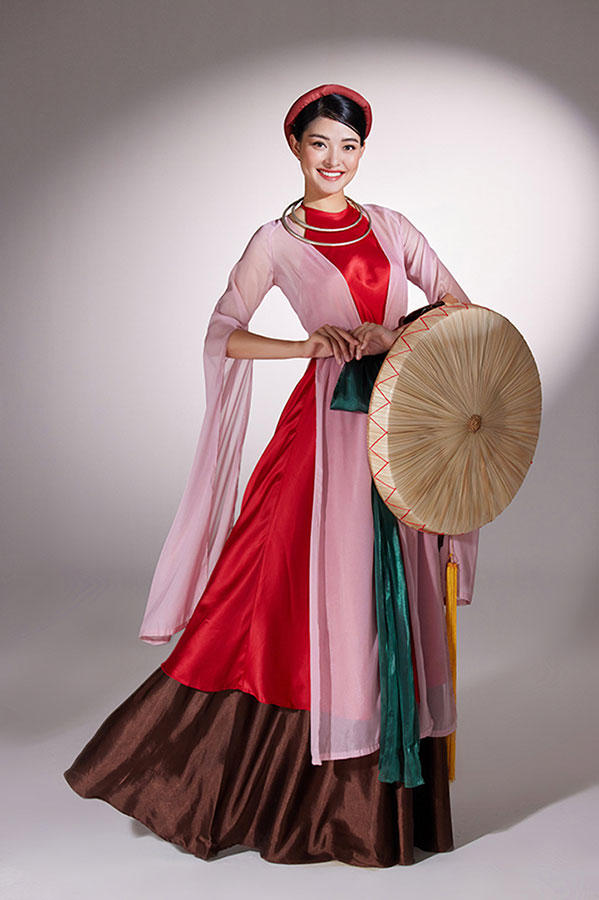
The five-panel Ao dai
The five-panel Ao dai is a continuation of the four-panel Ao dai, appearing during the reign of King Gia Long in the 19th century. It is designed based on the four-panel Ao dai with 4 panels sewn into 2 front panels and 2 back panels, with a loose-fitting body and a collar. It was extremely popular until the early 20th century.
The only difference is that this garment is sewn with an additional fifth panel, like a discreet undershirt, which both expresses the wearer's sophistication and humility. This change was intended to distinguish between the aristocratic class and the poor working class, demonstrating the difference in social status and class at the time.
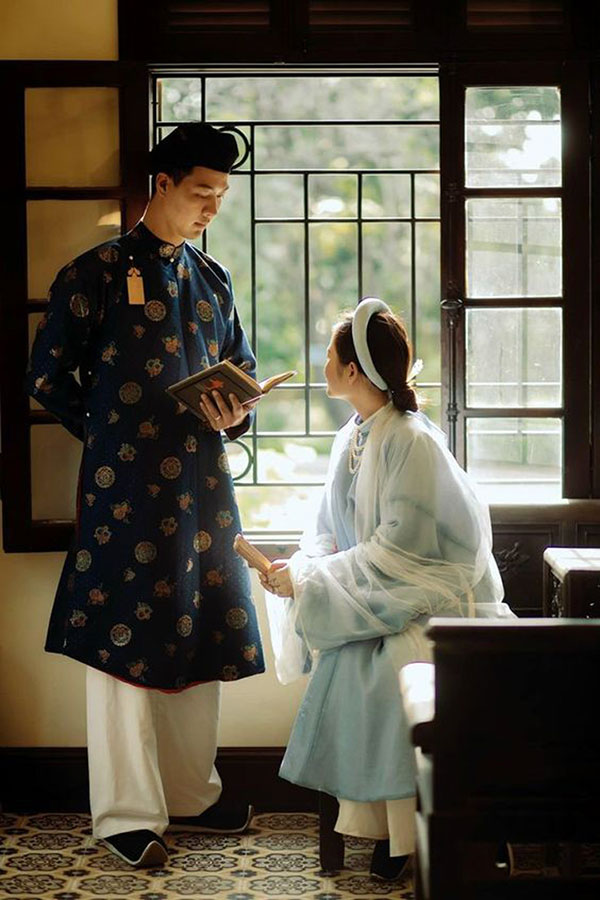
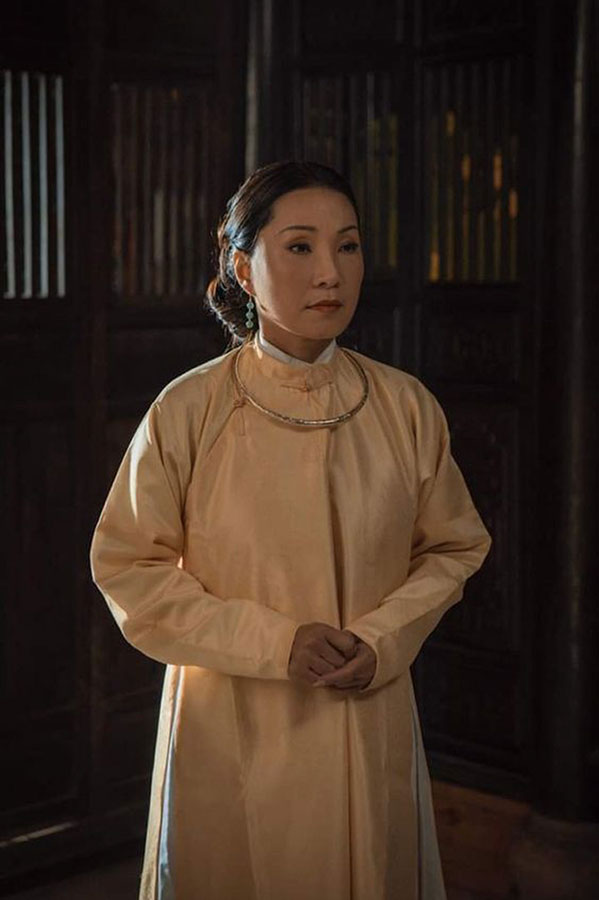
The Lemur Ao dai
In 1939, the first modern Ao dai was born, called the "Lemur Ao dai", which was adapted from the five-panel Ao dai, created by artist Cat Tuong and named after her French name. Unlike the traditional style, the Ao dai has two front and back panels, and is sewn close-fitting to the curves of the body, highlighting the graceful, charming and seductive beauty of women.
The puffed sleeve and heart-shaped neckline are inspired by the Western puff sleeve dress, making the Lemur Ao dai even more fashionable. To add a feminine touch, the front button row opens to a long slit along the shoulder and runs along one side of the waist.
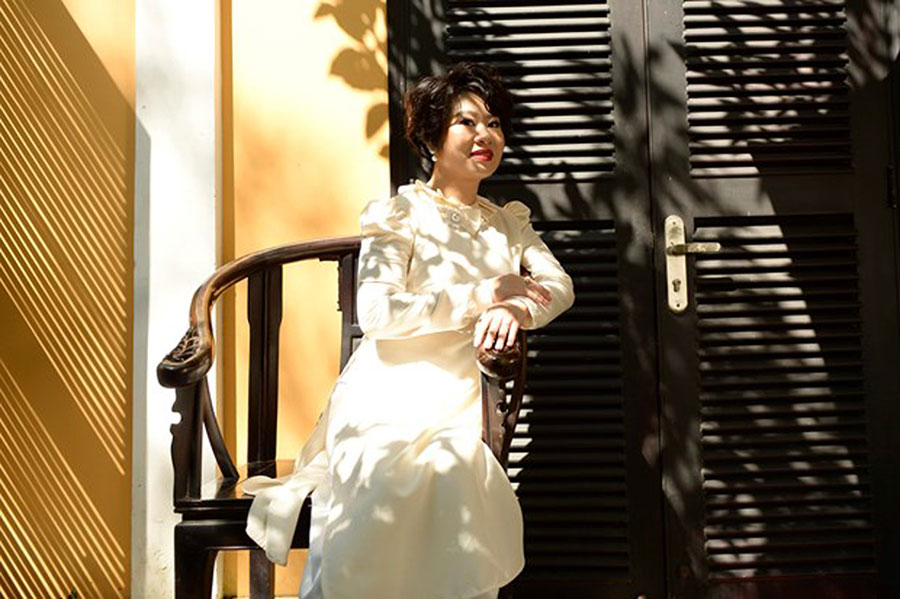
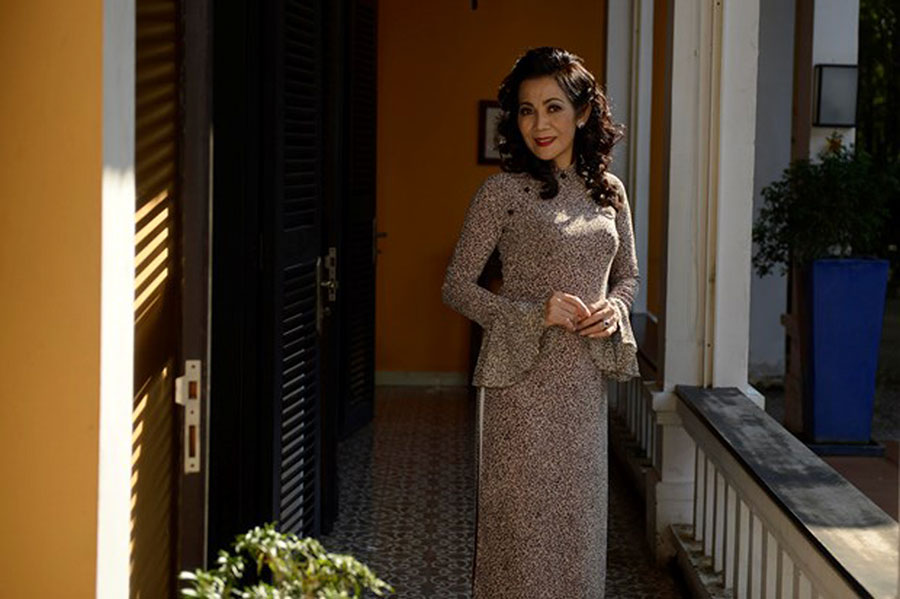
The Le Pho's ao dai
The Le Pho Ao dai is a combination of the four-panel Ao dai and the Lemur Ao dai, designed by artist Le Pho to be a more sophisticated and attractive garment with slender, youthful, and fresh curves.
The Le Pho Ao dai eliminates all Western elements that are not suitable for Vietnamese customs and traditions that the Lemur Ao dai brought. The skirt is sewn long and close-fitting to the body, the sleeves are not puffed, the collar is closed with a row of buttons on the right side, expressing the unique Vietnamese style of the Ao dai. This style became extremely popular in the 1950s and has been favored by Vietnamese women for a long time.
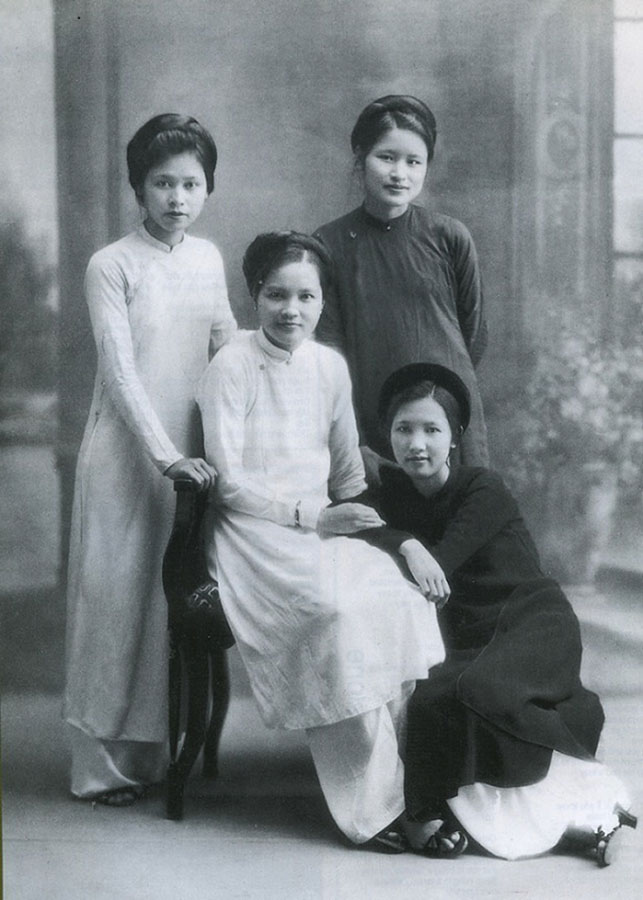
Raglan Ao dai
The next form is the "Raglan Ao dai", also known as the "raplăng Ao dai", which appeared in 1960 and was designed by the Dung tailor shop in Dakao, Saigon.
The Raglan Ao dai is fitted to the body, with the sleeves attached from the shoulder down. The two halves of the Ao dai are joined together with a row of buttons, and the wrinkles at the armpit are removed, making the garment more elegant. This design both reduces wrinkles at the armpit and allows women to move their arms more comfortably and flexibly. This is the foundation for the style of Ao dai that followed.
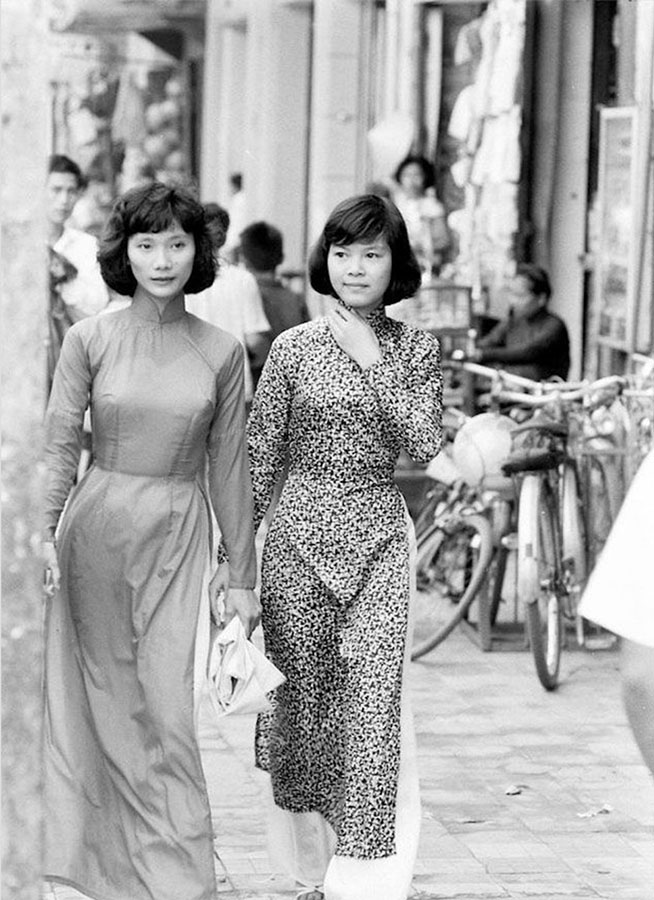
Tran Le Xuan Ao dai
In the 1960s, the Ao dai underwent another change with a more seductive style, called the Madame Nhu Ao dai. Tran Le Xuan, the First Lady of the Republic of Vietnam, was the one who designed this style of Ao dai, removing the collar called the boat-neck Ao dai. Initially, this design was met with a lot of opposition because it was not in line with Vietnamese traditional customs, but later it became popular because of its simplicity, comfort, and sophistication.

Traditional Vietnamese Ao dai from 1970 to the present
After going through many historical periods, the traditional Vietnamese Ao dai officially emerged in the 1970s and has been preserved until today. The Ao dai has become the national costume, inheriting the finest features from its history of formation and development, while also expressing the Vietnamese culture and tradition.

Modern Ao dai, which appeared in 2017, has become a popular choice for Vietnamese women
Although there have been many changes in the style of the Ao dai, from conservative to modern and avant-garde, the traditional Ao dai still retains its rich beauty and unique flair that no other garment can provide. Modern Ao dai is still designed to fit the woman's body, but it has a more modern and stylish look. The new and unique designs have made the Ao dai more present in the lives of Vietnamese women.
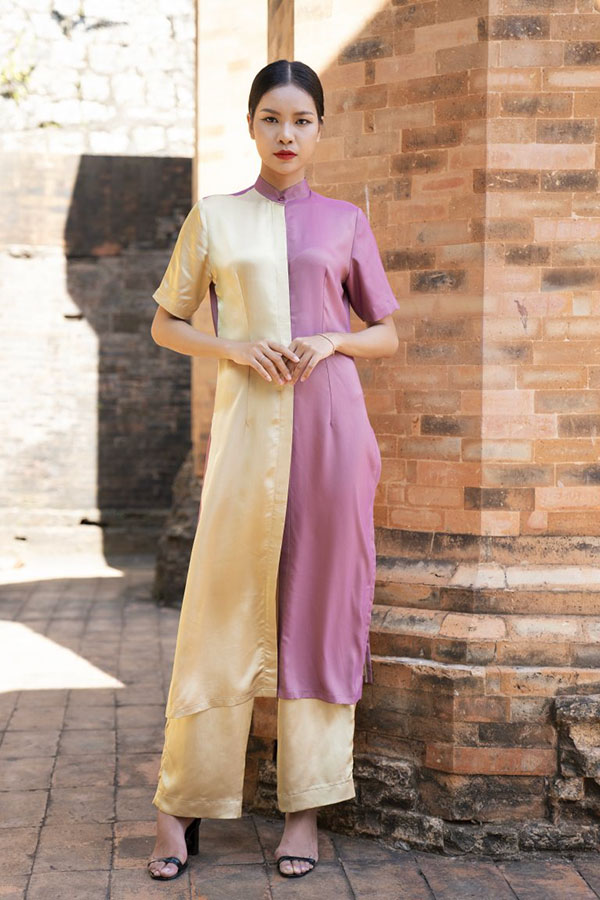


No matter who you are, you will look graceful in a traditional Ao dai. I hope this article will help you understand more about the beauty and meaning of the traditional Vietnamese Ao dai.

